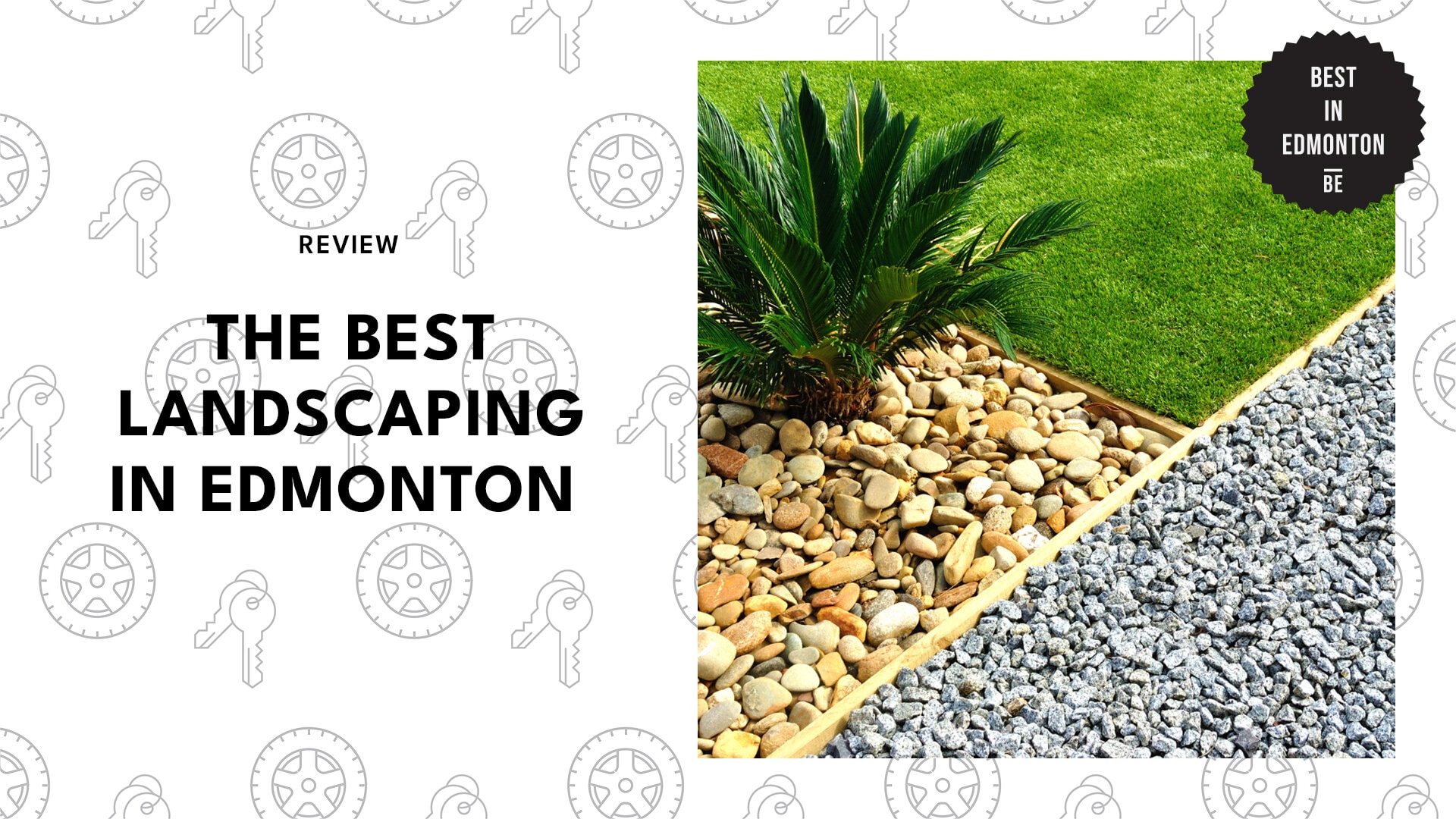Making the right landscaping choices is like choosing the right jewelery: it’s a personal decision that should align with what looks and feels right to you. After all, the outdoor scenery infront of your house is basically the bijoux of your home. But unlike jewelery, landscaping can transform an outdoor space into a beautiful and functional extension of your home. No matter what you’re looking for, Edmonton landscapers can do it. And we know exactly where to look.
1. APS Landscaping Inc.
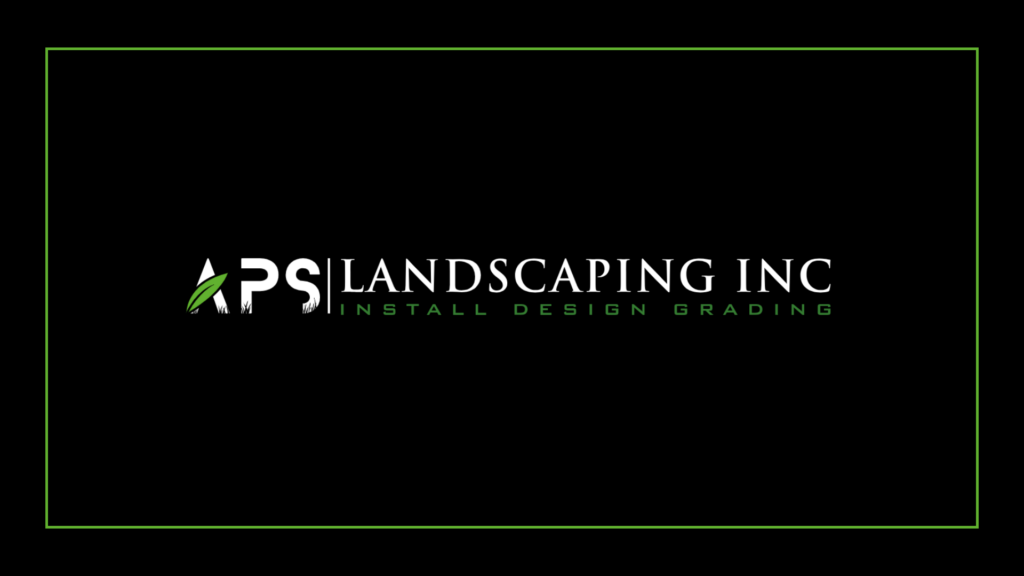
| BEST FOR | Landscaping |
| PRODUCTS | https://apslandscaping.ca/our-services/ |
| WEBSITE | https://apslandscaping.ca |
| ADDRESS | 5328 Calgary Trail NW Suite 1367 Edmonton, AB T6H 4J8 |
| CONTACT DETAILS | 780-246-5106 | [email protected] |
| OPERATING HOURS | 8:00-8:00 (Mon, Tues, Thu) 10:00-6:00 (Wed) 7:30-3:00 (Fri) |
First in our list of the best landscaping in Edmonton is APS Landscaping Inc. Delivering high-quality, detail-oriented work, they’ll turn a drab lawn into a beautifully designed work of art.
With modern equipment and experienced contractors, they’ll make your patios and walkways things to be admired.
Highlights
- Alberta Landscape Association member
- Free estimate
- Offers snow removal
2. Stellar Landscaping

| BEST FOR | Landscaping |
| PRODUCTS | https://www.stellarlandscaping.ca/Landscaping |
| WEBSITE | https://www.stellarlandscaping.ca/ |
| ADDRESS | Edmonton, AB |
| CONTACT DETAILS | 780 966-1515 |
| OPERATING HOURS | Contact for more details |
Stellar Landscaping has been serving clients in Edmonton for more than 20 years. From planting trees to constructing paving stone features, you can count on their team to enhance the look of any outdoor space and boost the value and aesthetic of your property.
Their team can design and build various distinctive features, including paver patios, retaining walls, irrigation systems, and custom water features.
Highlights
- A wide range of services
- Professional team
- Quick and thorough services
3. Greentree Outdoor Living

| BEST FOR | Large to small-scale landscaping |
| PRODUCTS | http://greentreeedmonton.ca/build/ |
| WEBSITE | http://greentreeedmonton.ca |
| ADDRESS | 5925 104 Street NW Edmonton, Alberta T6H 2K5 |
| CONTACT DETAILS | 780-476-YARD (9273) | [email protected] |
| OPERATING HOURS | 10:00-5:00 (Mon-Wed, Fri) 10:00-8:00 (Thu) 11:00-4:00 (Sat) |
Whether assigned to large or small-scale projects, Greentree Outdoor Living makes cohesive work by applying an organised, step-by-step plan to make your place gorgeous. Of course, all this work is done within time and budget
From lawn fire pits to spiffy terraces, they can design them with the client’s vision in mind. Their professionalism and wonderfully designed gardens, patios, and the like is why they’re among the best landscaping in Edmonton.
Highlights
- Free consultation
- Online bookings available
- ThreeBestRated Awardee
Customer Reviews
Here’s what customers are saying about GreenTree:
Eric and Matthew’s team were incredible. The vision we created with Corey for a backyard oasis became a reality within one weeks time with professionalism and kindness every step of the way. Communication was clear throughout the project; we felt kept in the loop and knew what would be happening the next day. Attention to detail was impressive. Now we have a finished yard that we will enjoy for years to come. We are grateful and appreciative and would highly recommend this crew to anyone who values quality and care.
-Anon, ThreeBestRated
Eric and Matthew’s team were incredible. The vision we created with Corey for a backyard oasis became a reality within one weeks time with professionalism and kindness every step of the way. Communication was clear throughout the project; we felt kept in the loop and knew what would be happening the next day. Attention to detail was impressive. Now we have a finished yard that we will enjoy for years to come. We are grateful and appreciative and would highly recommend this crew to anyone who values quality and care.
-Anon, ThreeBestRated
4. Earth and Turf Landscaping

| BEST FOR | Landscaping |
| PRODUCTS | Landscaping, Snow Removal, Property Maintenance, Earthworks |
| WEBSITE | https://earthandturf.ca/ |
| ADDRESS | #4, 51114 Range Road 264 Parkland County, AB T7Y 1E8 |
| CONTACT DETAILS | (780) 996-2041 |
| OPERATING HOURS | Contact for more information |
If you are looking for a landscaper that can turn your yard into something new, Earth and Turf Landscaping may be the company for you. They were established in 2010 and have been exceeding their clients’ expectations.
We prefer them over other companies since they can design and construct. Their years of experience allowed them to specialize in complete transformations of both residential and commercial properties.
You can see how great they work through the photos they provide on their website. They have inspirations you can get ideas from and before & afters.
We also like that they do not only do paving stones, garden walls retaining walls. They can also offer you rock and zen gardens, decorative rock, and even yard renovations.
They are one of the few companies that also has an online shop. They offer topsoil, decorative rock, mulches, etc with delivery in Edmonton and surrounding areas.
The only catch here is that their base rates are not on their website. But do not fret as getting a quote from them is free and easy.
Highlights
- Free quotes
- Ensure careful planning, communication, and implementation
- Offers financing for landscaping construction projects
5. Park Landscaping

| BEST FOR | Residential/Commercial Garden Landscaping |
| PRODUCTS | https://parklandscaping.ca/residential-landscaping/landscaping/ |
| WEBSITE | https://parklandscaping.ca/ |
| ADDRESS | 20924 100 Avenue NorthWest, Edmonton, AB T5T 5X8 |
| CONTACT DETAILS | 780-486-2744 | [email protected] |
| OPERATING HOURS | 8:00-5:30 (Mon-Fri) |
Next in our list of the services with the best landscaping in Edmonton is Park Landscaping. They offer services for garden landscaping such as dethatching, flower beds, fencing repairs, dead grasses removal, weed control, and lawn care.
They also offer other landscaping services such as swimming pools, and snow removal. With state of the art equipment, and delivering well-made, well-maintained landscapes for your home area, they’re a pleasure to do business with.
Highlights
- Landscape Awards 2019 Winner
- Better Business Bureau partner
- Free estimates
Customer Reviews
Here’s what customers are saying about Park Landscaping:
I’ve been a client with the park for over 9 years now. Eli and his crew did our initial landscaping job and subsequently, have done other projects on our yard. Most recently last month. Park is an excellent company. They have done a fantastic job on our property and most importantly they are very responsive and warranty their work and fix any deficiencies. This is one of the most important thinks about picking a contractor and as such, I would highly recommend Park. Thanks, Eli for all the great work!
-Anon, ThreeBestRated
I had Eli from Park landscaping come to my house and install some trees and shrubs for me. He was amazing to work with. Not only did he help me plan where they would be best equipped to grow but he gave me suggestions on mulch and care tips and helped me with a ton of other questions about care tips for the rest of my yard. We also hired them to take care of the weeding and fertilizing of our grass. We are very happy with them and will continue to use their services for all of our landscaping needs.
-A. Boutin, Google Reviews
6. Garden Magic Landscaping
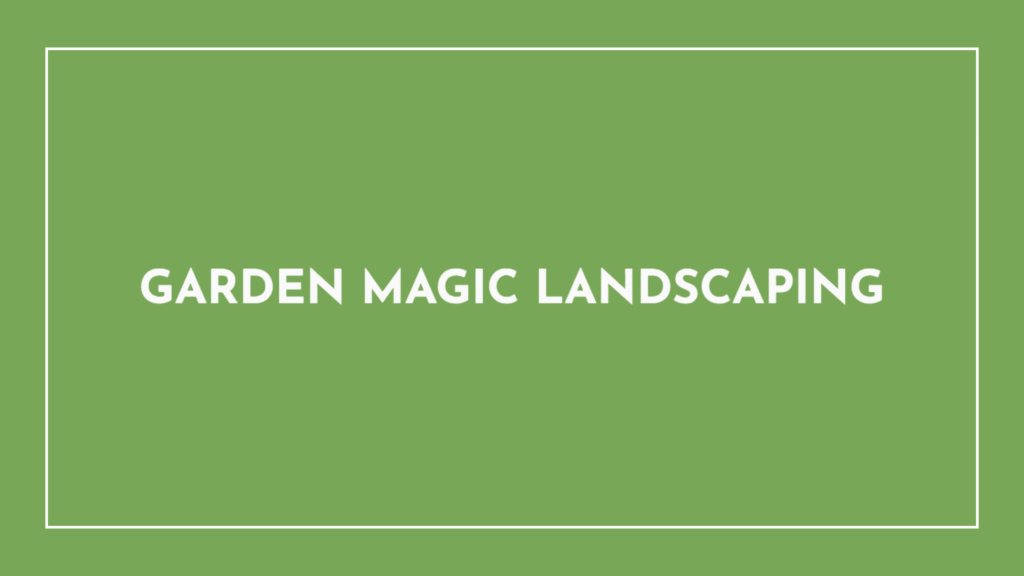
| BEST FOR | Landscaping Services |
| PRODUCTS | https://www.gardenmagiclandscaping.com/services.html |
| WEBSITE | https://www.gardenmagiclandscaping.com/ |
| ADDRESS | Edmonton, AB |
| CONTACT DETAILS | Robert: 780 200 7312 [email protected] |
| OPERATING HOURS | Monday – Sunday: 7am – 7pm |
Garden Magic is a local family owned and operated landscaping company that concentrates on client care, core ethics, professional workmanship and environmentally friendly approaches. Their continuous growth and evolution are due solely to the application of these four fundamentals. What goes around comes around.
Their customers, their referrals and associated reviews are our lifeblood. It’s that simple! If you are looking for an honest and reputable landscaping company that works for both you and your environment and that will design, install and deliver a beautiful and unique outdoor oasis, give them a call.
They have a proven record, a 5 star review average, and best of all……. they love what we do!
Highlights
- 25 years experience
- 5 Star review average on Google
- Fully licensed, insured and WCB
Customer Reviews
Here’s a review from one of Garden Magic Landscaping’s clients:
“I love my new garden!!!!! Robert was really exceptional on his approach to the job. I had another company come out to help me design the landscaping and after they left it was a clear that Garden Magic was in a league of their own. Attention to detail, going above and beyond, taking the time to do it well…no short cuts. The end result was beautiful. Highly recommend them.”
Here’s another one:
“These guys love what they do and it affects everything positively. They had fantastic personalities, were very professional, and also affordable, it doesn’t get much better than that. There’s a big difference between big box companies and smaller companies that enjoy working together. Whether your job is big or small, it’s definitely worth your while to give Robert and his team a call for a fair quote.”
7. Blue Isle Landscaping

| BEST FOR | Residential Landscaping |
| PRODUCTS | Retaining Walls, Steps and Pathways, Waater Features, Contracting, Rough Gradingm Fire Features, Driveways, Pool Decks |
| WEBSITE | https://blueislelandscaping.com/ |
| ADDRESS | #412 19904 118a Ave NW Edmonton, AB |
| CONTACT DETAILS | 780.616.0512 |
| OPERATING HOURS | Contact for more details |
Blue Isle Landscaping is a fully-licensed and insured family-owned business. Apart from having expertise in residential landscaping, they also offer a complete range of contracting service for commercial projects.
Make your backyard stand out by adding a custom water feature. NO matter if you want a big or small one, they will build it to be as little maintenance as possible so that you will experience a hassle-free water feature for years.
Alongsde with this, why not spice up your patio as well. What makes them stand out is that they will design and develop a custom layout that will surely maximize your available space and fits the aesthethic of your yard.
Unfortunately, their base rates are not available on their website. However, they do offer free and no-obligation consultation.
Highlights
- Free Consultation
- 3-year warranty
- Will make sure to not go over the said budget
8. Pillars of Earth Construction
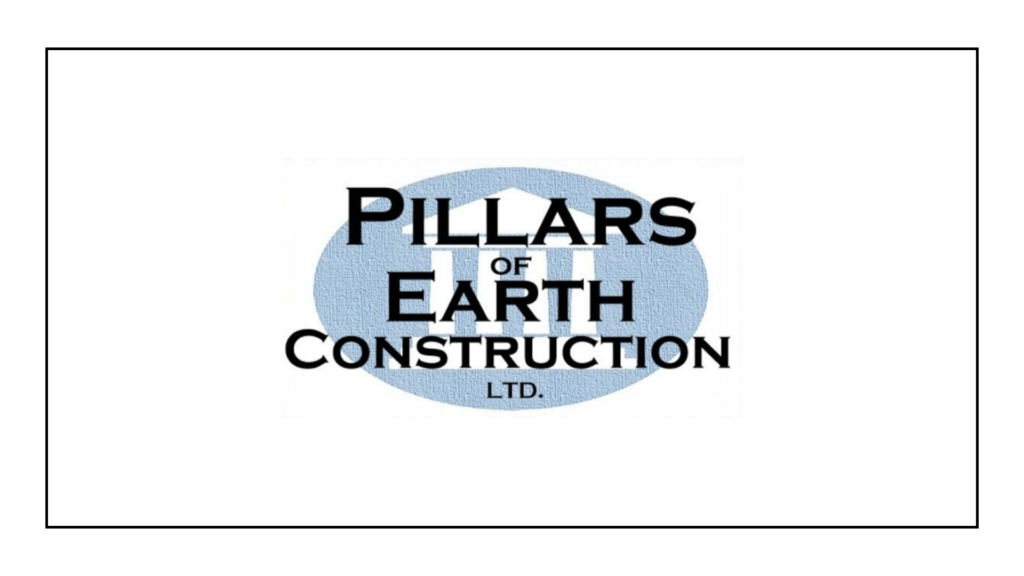
| BEST FOR | Construction, Fences and Gate |
| PRODUCTS | http://www.pillarsconstruction.ca |
| WEBSITE | http://www.pillarsconstruction.ca |
| ADDRESS | Edmonton, AB T5T |
| CONTACT DETAILS | (780) 266-7491 | [email protected] |
| OPERATING HOURS | 8:00-8:00 (Mon-Fri) 11:00-6:00 (Sat-Sun) |
These are landscape construction specialists who turn your home into an invaluable work of art. They directly talk to the clients so they cut off the middleman and get to business.
Their services and great interactions with clients and businesses alike are what put them in here in the list of the companies that do the best landscaping in Edmonton.
Highlights
- Better Business Bureau accredited member
- Industry veteran
- Master wall builder certification
Customer Reviews
Here’s what customers are saying about Pillars of Earth:
“The whole experience and the service with Pillars of Earth Construction were impeccable to say the least! Thank you for making it easy for my parents during some of the harsh days. Please do note that we really appreciated it and thanks for being so cheerful and positive with our requests. I’ve already recommended you to many of my family and friends and will continue to do so!”
-Bevin E, Website Testimonials
Gutter cleaning done on schedule today. Not a huge job but really glad I’m not on the roof myself anymore. Big thanks to Pillars of Earth for a job done quickly and cleanly and reasonably priced. Can’t ask for anything more. Their snow removal work last year has easily earned them a renewed contract for this year.
-Drew M, Yelp
9. Embark Landscape Design

| BEST FOR | Residential and Commercial Lawn Care |
| PRODUCTS | https://www.embarklandscapedesign.com/new-page-1 |
| WEBSITE | https://www.embarklandscapedesign.com/ |
| ADDRESS | 18432 55 Ave NW, Edmonton, AB T6M 1Y7, Canada |
| CONTACT DETAILS | 780-716-3064 | https://www.embarklandscapedesign.com/contact |
| OPERATING HOURS |
With over 15 years of combined experience, you can expect nothing short of the best from Ben and Jared of Embark Landscape Design.
Be it residential or commercial property, Embark Landscape Design strives to deliver the highest quality of service to their clients, all to ensure a positive experience with their company.
Highlights
- A+ rating on Better Business Bureau
- Offers snow removal
- Senior discounts available
10. Landscape Specialists

| BEST FOR | Residential and Commercial Landscaping |
| PRODUCTS | https://www.landscapespecialists.ca/services |
| WEBSITE | https://www.landscapespecialists.ca/#home |
| ADDRESS | |
| CONTACT DETAILS | +1 780-709-0358 | [email protected] |
| OPERATING HOURS | 8:00-6:00 (Mon-Sat) |
True to the business’ name, the people behind Landscape Specialists constantly deliver quality residential and commercial landscaping for reasonable prices. This makes them a great choice for the best landscaping in Edmonton.
Landscape Specialists work closely with their clients from the very first step: designing the landscape. The following steps, like rough grading, paving, and planting are all met with the same care and meticulousness — resulting in amazing landscapes for all of their projects.
Highlights
-
Free Consultations
-
Custom Designs
-
Free Estimate
Customer Reviews
Here’s what customers are saying about Landscape Specialist’s services:
“Ryan and his team did an excellent job with the complete landscaping of our home. From dealing with the approvals to keeping us up to date on all steps, we felt we we’re in great hands throughout and after the project. The team was professional and Ryan was very accessible with whatever question or concerns we had. We would highly recommend them.”
-Melissa, Google Reviews
“Brittney did a beautiful design for my front & back yard lanscape, and went through lots of details with me, as a first time house owner, it was very helpful… Ryan and his crew are professional, honest, fast and well communicated. I would definitely recommend this company!!!”
-Ray Lin, Facebook
11. Spruce Permaculture Landscaping

| BEST FOR | Landscape Design, Installation, and Maintenance |
| PRODUCTS | https://sprucepermaculture.ca/services-2/ |
| WEBSITE | https://sprucepermaculture.ca/ |
| ADDRESS | |
| CONTACT DETAILS | +1 780-240-8887 | [email protected] |
| OPERATING HOURS | 8:00-5:00 (Mon – Fri) |
Spruce Permaculture is a noteworthy addition to the list of best landscaping in Edmonton for a number of reasons — all of which are rooted in the business’ values.
The company, at its core, strives to deliver high quality landscaping services to their clients. Alongside this goal is to incorporate sustainability in all of their projects, as well as the opportunity to make said landscaping edible. After all, everyone has a right to accessible food on their properties.
Highlights
- Online booking system
- Edible landscaping
- Local and sustainable sourcing
Customer Reviews
Here’s what customers are saying about Spruce Permaculture Landscaping:
“Absolutely thrilled with my new yard! I asked Spruce Permaculture Landscaping to create and implement a plan to turn my tired, boring, overgrown front and back yard into something more sustainable, more environmentally friendly and more beautiful. They came up with a creative and inspiring design that has completely transformed the property and attracted positive comments from the neighbours. They answered my questions at every stage and came up with innovative solutions. I recommend Spruce Permaculture Landscaping without hesitation.”
-Don Hazlett, Google Reviews
“Spruce Permaculture did some work on my front yard last summer and I hired them again this year to revitalize an area of my back yard. They have been excellent to work with! Very knowledgeable, full of enthusiasm, and they worked very hard to create a thoughtful and well-executed project I would be happy with. I would totally recommend them!”
-Jocelyn Badley, Google Reviews
12. Julia’s Alpine Garden

| BEST FOR | 3D renderings of landscape design |
| PRODUCTS | Contact for details |
| WEBSITE | http://www.juliasalpinegarden.ca/ |
| ADDRESS | Contact for details |
| CONTACT DETAILS | Email: [email protected] Cell: +1 780 498 3605 |
| OPERATING HOURS | Contact for details |
Julia’s Alpine Garden has landscape designers who have been planning beautiful residential and commercial landscapes for over 30 years.
Julia’s landscape designs are done at your property as scale, architectural pencil drawings to allow for spontaneous creativity, maximum usefulness, and affordability. Additionally, you can order 3D renderings of certain areas of the design as well as a complete 3D design.
Highlights
- LANTA award-winning landscape design
- 3D rendering and project management can help visualize your dream backyard
Customer Reviews
“I’m a local Architect and I have recommended Julia to a couple of the builders I work with. I have heard nothing but great reviews from several clients and the general contractors that keep using her services on a regular basis. Great job keep it up”
-Lukas T. Woch, Google Reviews
13. Great Northern Landscapes

| BEST FOR | Paving stone installations, Start-to-finish residential landscaping |
| PRODUCTS | https://greatlandscapes.ca/#specialties |
| WEBSITE | https://greatlandscapes.ca/ |
| ADDRESS | |
| CONTACT DETAILS | +1 780-298-5263 |
| OPERATING HOURS | 8:00 am – 5:30 pm (Mondays to Fridays) |
Great Northern Landscapes is one of the most well-known landscaping companies in Sherwood Park and the greater Edmonton area. They specialise in hardscapes and softscapes for residential and commercial projects — offering paving stone installation, artificial turf, low maintenance garden design, retaining walls, fire-pits, and stone patios. A lot of their projects include yard and lawn renovation / replacement, decks, rough and final grade, excavation and demolition.
If you want a company that can practically solve all of your curb appeal woes, then check out Great Northern Landscapes.
Highlights
- A+ rating on Better Business Bureau
- Sherwood Park & District Chamber of Commerce member
- Offers free quotes
Customer Reviews
Here’s what customers are saying about Great Northern Landscapes:
“We are so happy about our experience with this team of hard working, professional, and polite guys. They came when they said they were coming, they completed the job on time and the quality of there work is beyond our expectations. The result is a beautiful fire pit and a stunning carport pavement that finishes off the front of our house. I WILL be telling others about this company. Thanks Brandon…you are our go to guy in the future.”
-Lee Andrus, Google Reviews
“Brandon and his team have done such an amazing job on our grading and landscaping. Their attention to detail is second to none. We are so very pleased we waited for them. They are busy for good reason. Their eye for the end results and vision for a blank canvas are fantastic. 150% happy! Thank you and your entire crew!”
-Ken Rice, Google Reviews
14. Elite Ground Solutions Inc.

| BEST FOR | Full Service Landscaping |
| PRODUCTS | https://eliteground.ca/services/ |
| WEBSITE | http://www.elitegroundsolutions.ca/ |
| ADDRESS | Edmonton, Alberta |
| CONTACT DETAILS | (780) 217-7463 | [email protected] |
| OPERATING HOURS | Contact for more information |
Elite Ground Solutions Inc. specializes in providing quality residential and commercial landscaping services. They offer landscaping services such as full-service landscaping, grading, retaining walls, and more, at reasonable rates.
They pride themselves in providing the best customer experience and guarantee to help you along the way with any issues you may have after they’re done. Aside from that, their years of experience have helped them gain expertise in drainage and compaction so you won’t have to worry if you have earthwork problems in the future.
Highlights
- Quality landscaping
- Free quotes
- Drainage issues
Customer Reviews
Here’s a review from one of Elite Ground Solutions Inc.’s clients:
“Fantastic company they fit us in timely and got the job done with efficiency and accuracy. Owner and his workers were all professional and easy to talk to / work with.”
15. Premium Properties Inc. Landscaping

| BEST FOR | Small-Medium Landscaping |
| PRODUCTS | https://www.landscapingyeg.com/ |
| WEBSITE | https://www.landscapingyeg.com/ |
| ADDRESS | 11803 78 Avenue Northwest, Edmonton, AB |
| CONTACT DETAILS | +1 587-206-9606 |
| OPERATING HOURS | Contact for more information |
Premium Properties Inc. Landscaping has been in Edmonton since 2016 and has been devoted in providing all their clients with landscaping services that exceed expectations.
They specialize in small to mid-sized landscaping projects and offer them quality services at a reasonable rate. They’re open to working with you whether it be a commercial or residential project.
Highlights
- Online booking
- Quick and Quality Work
- Reasonably priced landscaping
Customer Reviews
Here’s a review from one of Premium Properties Inc. Landscaping’s clients:
“Fast, friendly, reasonably priced, professional service, and take pride in their work. I had them come for spring clean up. I have used different and perhaps cheaper people in the past, but I will be sure to use Premium Properties Inc again. I have already asked them to come back to help with another landscape project. I happily recommend this company.”
Here’s another one:
“Awesome experience working with Rob. He is super knowledgeable and very hard working. He knows the landscaping business like the back of his hand. Very considerate and focused on providing a high quality service for an affordable price to his clients. He also treats his employees very well. Highly recommended! You’ll be quite pleased to have Premium Properties working for you!”
16. TDG Curb and Landscape
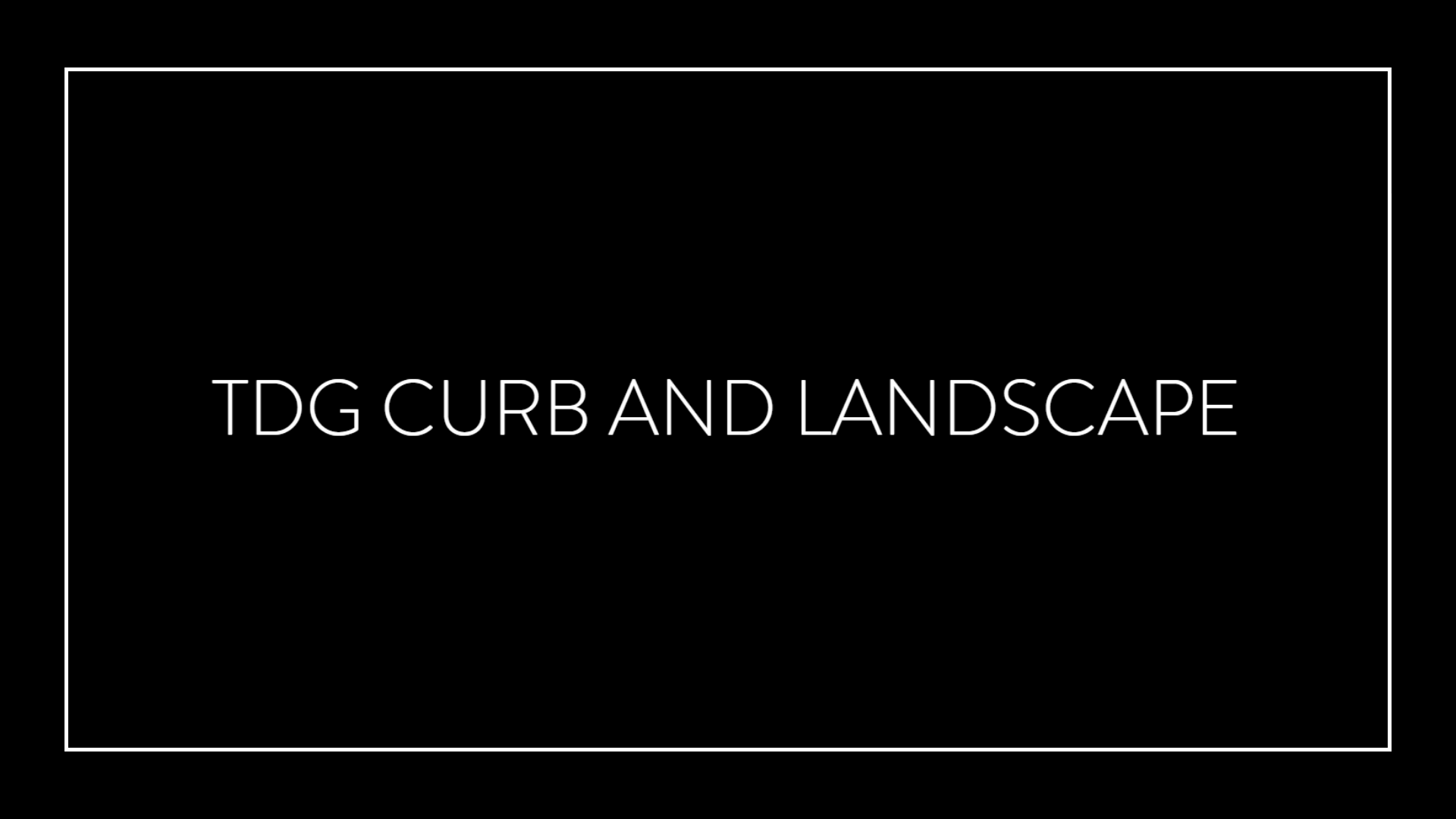
| BEST FOR | Concrete Curbing, Retaining Walls, Synthetic Grass, Decorative Concrete, Stone Patios, Year Round Maintenance |
| PRODUCTS | https://www.tdglandscape.com/ |
| WEBSITE | https://www.tdglandscape.com/ |
| ADDRESS | 19014 49a Ave NW, Edmonton, AB T6M 2T9, Canada |
| CONTACT DETAILS | [email protected] (780) 983 5648 |
| OPERATING HOURS | veryday: 7am–8pm |
TDG Curb and Landscape is your one stop shop for all your landscaping needs. They are definitely a company you can trust, with their over 100 successful landscape jobs completed.
From their durable stone patios, to their efficient concrete curbing, TDG Curb and Landscape can be trusted to create only the most pleasing outcomes with their professional services. Contact them now and get a free quote into achieving your dream yard!
Highlights
- Wide range of services
- Beyond what is visible in their site, you can contact them for a full list of services that you can request for your space
- They are highly experienced and is known for giving the highest level of professionalism
Customer Reviews
Here’s a review from one of TDG Curb and Landscape’s clients:
“Positive: Professionalism, Punctuality, Quality, Responsiveness, Value
We needed landscape fabric laid and 9 yards of rock installed. Courtnell and the team at TDG were working on a huge job in our neighbourhood and they were able to get our job done with a large crew in only one day! And it looks fantastic. Pricing was very competitive and the job was done right the first time. We are really happy with how it all turned out and we would definitely hire them again! Thanks again Courtnell!”
Here’s another one:
“TDG completed our landscaping project this summer and we could not be happier. The work is stellar, the staff were prompt and courteous, keeping the site clean daily, and the project came right in on budget. Extremely satisfied and could not recommend any higher.”
17. Total Touch Contracting Inc.

| BEST FOR | Landscaping & Interior Renovation |
| PRODUCTS | https://www.ttc-inc.ca/services |
| WEBSITE | https://www.ttc-inc.ca/ |
| ADDRESS | Edmonton, AB |
| CONTACT DETAILS | |
| OPERATING HOURS | By appointment |
Total Touch Contracting Inc. (TTC) is not your ordinary landscaping and renovation company. What makes them unique is that even though they are small, they still provide unexpected professional deisgns and installation of all phases in landscaping and renovation.
No matter if it is residential, commercial, estate, or acreage, people still prefer to contact them when they need their landscaping services. The reson behind this is how they focus on details and active they are from the beginning up until the end of the project.
Prefer things to be perfect? TTC is the perfect company for you. According to the testimonials of their previous clients, they mentioned how pleased they were in working with Curtis since he gave all of his attention to details and always answered any question the client had.
Unlike other companies, their team always take in mind to recognixe the client’s requests and ideas in order to fully satisfy them. This mindset definitely helped them build a reputation wherein they can turn dreams into reality
Highlights
- BBB ACcredited business
- Free quote
- Wide range of services
Customer Reviews
Here’s a review from one of Total Touch Contracting Inc.’s clients:
“I highly recommend this business as Curtis is incredibly patient and a natural perfectionist! Happy customer here!”
Here’s another one:
“We were so pleased with the entire experience of renovating our front yard! Curtis was helpful in all areas…including the acid-wash on the front steps! If he didn’t know the answer to a question we had, he found out for us. The young fellows who felled the trees, relaid the interlocking brick, etc., were pleasant and agreeable. When Curtis told us that a phase of the work would be done on a certain day and time, it happened! Thanks again!”
18. Morris Landscaping & Tree Service
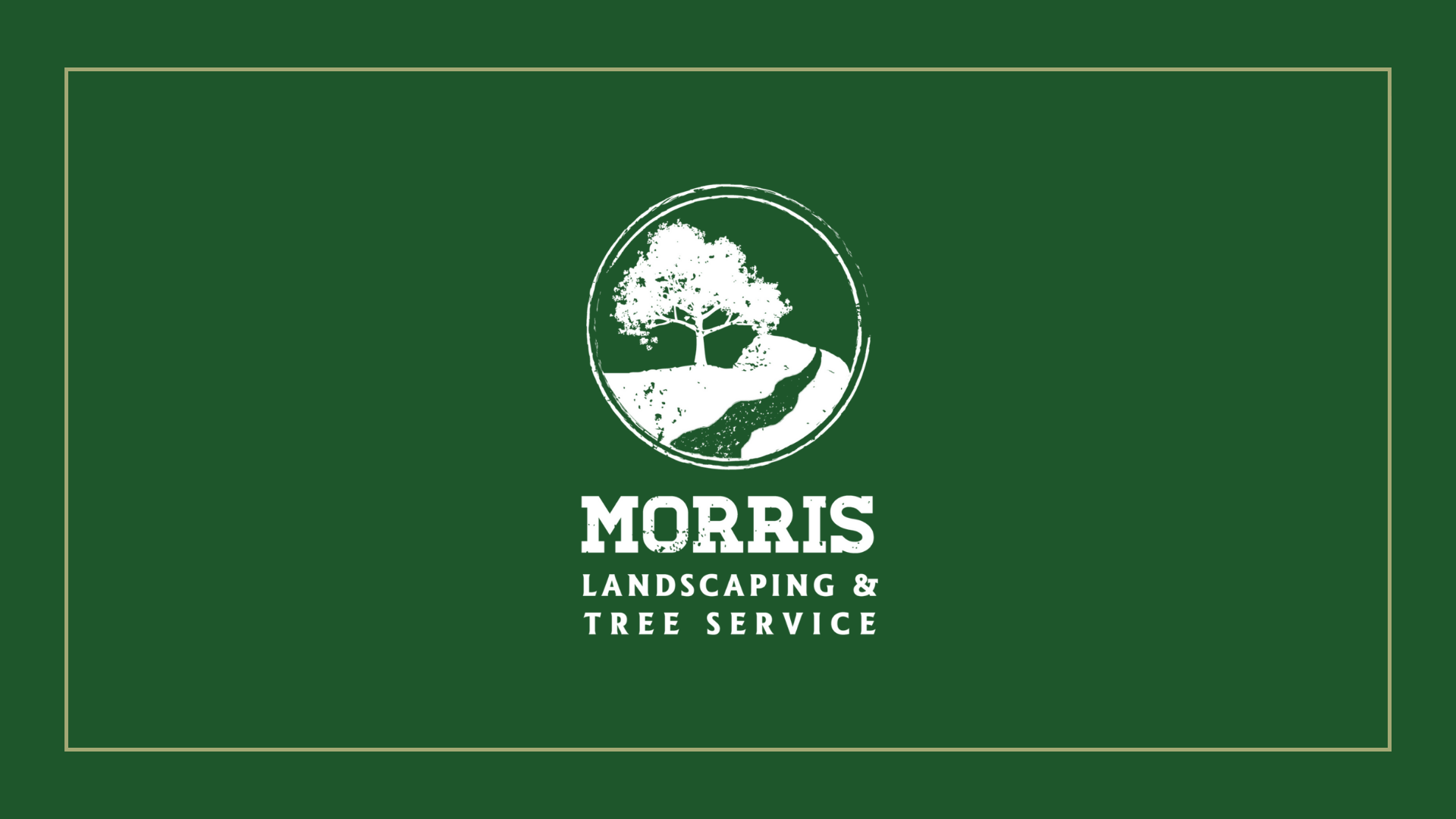
| BEST FOR | Landscaping and Tree Services |
| PRODUCTS | Landscaping Tree Service Water Features Hardscapes |
| WEBSITE | https://morrislandscaping.ca/ |
| ADDRESS | Edmonton, AB |
| CONTACT DETAILS | (780) 288-0969 [email protected] |
| OPERATING HOURS | Contact for more details |
Morris Landscaping & Tree Service is a family owned and operated business based in South Edmonton and Leduc. They are committed to providing personal and quality service to each and every customer.
In comparison to other companies, they strive to always bring attention to details and quality of service. Whether you need a tree removal, an extensive water-feature construction, or complete landscaping makeover, these guys have you back.
People prefer to contact them because they operate at a fully comprehensive and professional level. Having an International Society of Arboriculture (ISA) Certified Arborist (Nelson Morris, PR-5145A) on their staff members plus combined with years of experience, makes them the most excellent choice for your landscaping and tree needs.
Their landscaping designs are so unique and incomparable. They offer 2D and #d landscaping concept designs so that clients can better visualize their yard before they begin the project.
Highlights
- Free quote
- Responds within 24 hours
- Rate for landscaping designs are available on their website
Customer Reviews
Here are some reviews from their previous clients:
“these guys were awesome! they were on time, totally safe, cut and stacked the wood, cleaned up after. I’m impressed! totally recommend them!”
“They did an excellent job trimming out two of my trees! The trees look great and very clean with no cut ends left at all. Very happy with everything!”
19. Classic Landscapes

| BEST FOR | Nurseries, Gardening |
| PRODUCTS | http://www.classiclandscapes.com/#services |
| WEBSITE | http://www.classiclandscapes.com/ |
| ADDRESS | 10008 – 6 Ave SW, Edmonton, AB, T6X 0S8 |
| CONTACT DETAILS | 780-988-9888 |
| OPERATING HOURS | 8:00-5:00 (Mon-Fri) |
Giving quality care for your gardens and homefront whether its maintenance or an all-out renovation. They serve commercial and residential areas and also provide different products.
They have a dedication to fixing gardens, beautifying the atmosphere by giving it a natural-looking flair. Their brilliant workmanship along with professional services, puts them in a spot on the list of the best landscaping in Edmonton.
Highlights
- 2016 Business In Bloom Awardee
- Offers product deliveries
20. Quality Curbs

| BEST FOR | Residential stone curbing |
| PRODUCTS | http://qualitycurbs.ca/pricing/ |
| WEBSITE | http://qualitycurbs.ca/ |
| ADDRESS | 8429 24 St, Edmonton, AB T6P 1L2, Canada |
| CONTACT DETAILS | +1 780-220-6383 | [email protected] |
| OPERATING HOURS | 8:00-8:00 (Daily) |
Curb appeal is crucial in maintaining the beauty of the home, and Edmonton-based landscaping business Quality Curbs understands this truth very well. They also see the importance of offering quality curb services at reasonable price points, evident in how their prices don’t go beyond $15 per linear foot.
Another thing to note about Quality Curbs is that the design possibilities are endless. From the stamps to the colours used — there’s no questioning that they deserve their spot on the list of best landscaping in Edmonton.
Highlights
- Highly customisable service
- Affordable price points
Customer Reviews
Here’s what customers are saying about Quality Curbs:
“If I had more curb to be done I would have Tyler with quality curbs back here. I recommend him to all my friends and family. They where really nice, did a “quality” job and respected all my wants and needs. Change things as we went through the walk through with no problem. His personnel were very respectful and accommodating.”
-Tyler Hammett, Google Reviews
“We saw some of the work Quality Curbing does at our nephew’s place. Really liked the look and style that this gives to the garden borders, plus it makes cutting the grass much easier and dramatically reduces the trimming needed. We asked Tyler to give us a quote on doing our yard last fall. Well the weather didn’t cooperate at all so we ended up doing it this spring. They were very willing to hold the quoted price and schedule the work for May, 2019.
The guys showed up and in one day, removed 500’ of sod, 500’ of existing edging and laid just over 400’ of curbing. They were here at 08:00 and done by 15:00. The work is excellent and the crew was very helpful, polite, extremely friendly and professional. They did a great job cleaning up after themselves.
Our nephew and 4 other family members have now had Quality Curbing do this work in their yards. All of us are extremely pleased with the outcome. Tyler does a superior job at a very reasonable price. I would highly recommend their service to anyone who is tired of dealing with the regular plastic border or paving stone garden edging.”
-Dean, Homestars
21. Edge Equipment

| BEST FOR | Landscaping Equipment |
| PRODUCTS | Landscaping Equipment, Pre-owned Landscaping Equipment, Snow Removal Equipment |
| WEBSITE | https://www.edgeequipment.com/ |
| ADDRESS | 12704 149 St, Edmonton, AB T5V 1B3, Canada |
| CONTACT DETAILS | Phone: +17804553343 Email: [email protected] |
| OPERATING HOURS | Monday – Friday: 08:30 AM – 04:30 PM |
Edge Equipment is a well-known company that sells high-quality forestry and heavy equipment.
We were immediately impressed by their extensive inventory of new and used landscaping equipment, which we believe provides consumers with limitless options.
If you’re planning to renovate your backyard or create an ideal environment for your garden, Edge Equipment has almost every piece of equipment you need, such as mulchers, lawnmowers, and skid steers.
We also appreciate that all of their products are well-categorized and photographed on their website, eliminating the need for interested customers to contact them for product details.
They are conveniently listed under each listing if you have any questions about the manufacturer, model, or complete seller information.
Unfortunately, we don’t like the fact that their rates are relatively higher. However, we liked that they accept almost all payment methods and ship worldwide.
We’d also like to point out that Edge Equipment has in-house finance specialists who can help you find the best financing options for your needs.
Furthermore, many of the clients we interviewed praised them for being responsive to inquiries and pleasant to work with.
Overall, we highly recommend Edge Equipment because they are a one-stop shop for all your landscaping needs.
Highlights
- Extensive inventory of landscaping equipment
- Detailed product listings
- Has in-house finance specialists
- One-stop shop for all your landscaping needs
Customer Reviews
Great services and easy to deal with
“Dealt with this company quite a bit. Service is great can call them whenever I have a problem on our underground mining road machine.” -Travis Z.
Responsive to queries
“Awesome people, answers all your questions.” -Jimmy R.
22. Trimlight

| SERVICES | Holiday Lighting Accent Lighting Patio Lighting Commercial Lighting Downlighting |
| WEBSITE | http://www.trimlightnorthernalberta.com/ |
| ADDRESS | |
| CONTACT DETAILS | 780-235-2829 |
| OPERATING HOURS | Monday – Saturday,7:00 AM – 6 PM |
Trimlight is one of the best providers of exterior lighting installations in Edmonton. They have been providing stunning, bright lighting on houses and businesses since 2011, offering consumers millions of color-shifting options and patterns to commemorate every holiday or event.
They mostly provide their innovative and patented system also named Trimlight that allows customers to have permanent, exterior lighting professionally installed on their homes and businesses. This eliminates the hassle and risks of hanging out Christmas or holiday lights ever again.
Their patented lighting system comes with an app with cutting-edge technology wherein you can program millions of colors, patterns, and animations. This patented mobile application is user-friendly, allowing consumers to simply set lighting colors and patterns that are entirely adaptable to fulfill any demand at any time of year.
With everything they have to offer, we truly believe that Trimlight is one of the most worthwhile exterior lights providers in Edmonton.
Highlights
- Fixed permanent external lights
- Prompt customer support
- Durable products
23. Lush Landscaping & Restoration Ltd.

| BEST FOR | Landscaping |
| PRODUCTS | https://www.lushlandscaping.ca/landscaping |
| WEBSITE | lushlandscaping.ca |
| ADDRESS | 13836 54A St NW Edmonton, AB T5A 4Z6 |
| CONTACT DETAILS | 780-717-5206 [email protected] |
| OPERATING HOURS | Monday – Sunday, 8:00 AM – 9 PM |
Lush Landscaping & Restoration’s services revolve around landscape design, installation, and repair in Edmonton. Their crew has the knowledge and abilities to offer you the yard of your dreams, whether you want to build a quiet green sanctuary or install a magnificent stone pathway.
Lush Landscaping & Restoration is a family-run business that offers a variety of landscaping services. Robert and his fantastic team founded the company because they were passionate about gardening and the landscape design process. Their mission is to assist residents in the Edmonton region in creating the yards of their dreams.
They take pride in their exceptional service and attention to detail, which is shown in the fact that many of their clients return to us for additional service after the first task is completed.
They can have it looking better than ever in no time, whether you’re planning a modest alteration or require a comprehensive revamp. Their restoration services are available for both front and back yards, giving you the ability to entirely transform the appearance of your whole property.
Highlights
- Over 10 years of experience
- Open seven days a week
- Flexible services
- Prompt customer support
24. Little Creek Landscaping Ltd.

| SERVICES | Landscape Design Landscaping Services: Retaining Walls Patios Planting and Gardening Wood Structures Cultured Stone Water Features Sod Sales Snow Removal Artificial Turf |
| WEBSITE | littlecreeklandscaping.ca |
| ADDRESS | 11108 22 Ave NW Edmonton, AB T6J 5H5 |
| CONTACT DETAILS | [email protected] (780) 278-5582 |
| OPERATING HOURS | Monday – Saturday, 8:00 AM – 6 PM |
Little Creek Landscaping is a landscape design and installation company that provides services in Edmonton, Sherwood Park, St. Albert, and surrounding areas. With a commitment to exceptional attention to detail, proven customer service, and the highest standard of craftsmanship, Little Creek Landscaping has earned a strong reputation within the community, winning an award for their landscape design services.
The company began operations in 2007 with a small team of employees and has since grown exponentially, expanding their operations to provide full design and installation services throughout Alberta and launching a tree farm that provides quality plant material to contractors and the general public.
Little Creek Landscaping offers a variety of services to suit their clients’ needs and budget, with a strong focus on communication and customer service. They understand that every site has its unique challenges and opportunities, and they work closely with clients to guide them through the process of selecting the best materials and achieving their vision for their landscape.
Highlights
- Award-winning landscape design services.
- Full design and installation services throughout Alberta.
- Strong focus on communication and customer service.
And that ends our list of the services offering the best landscaping in Edmonton. These landscaping companies can help you make your home gorgeous and picture-perfect.
But if you’re done having the lawn fixed and are now in need of plumbing repairs or work — such as a new soaker for your lawn plants — here’s a list of the best plumbers in Edmonton.


